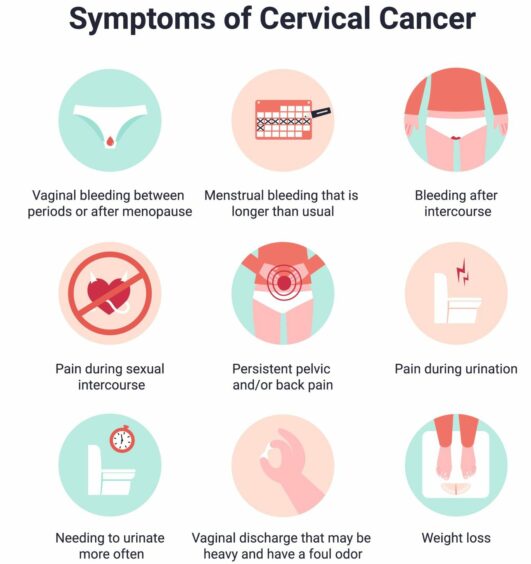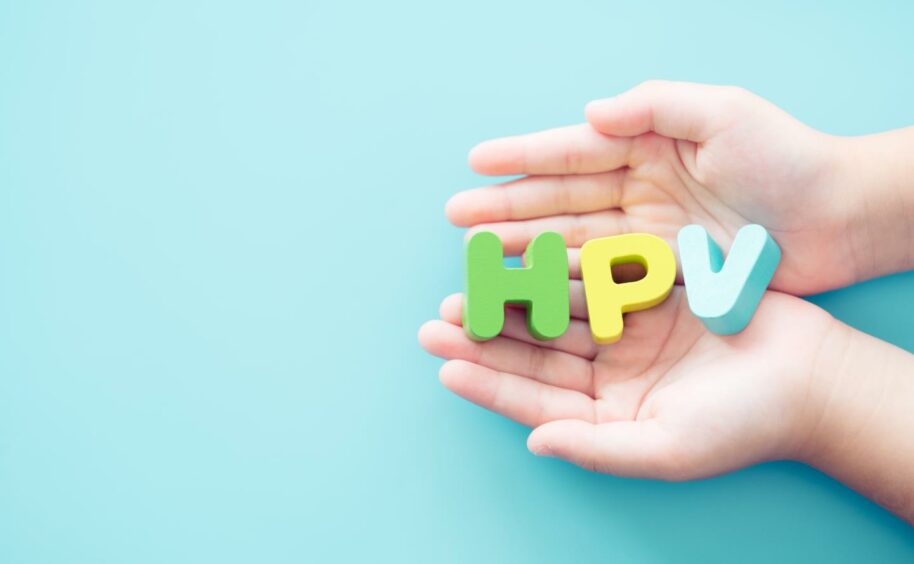Around six women in Scotland are diagnosed with cervical cancer every week.
It is the most common cancer in Scottish women aged between 25 and 35.
But what causes cervical cancer? What are the signs and symptoms to look out for? And what treatment is available?
We’re answering all your questions.
What causes cervical cancer?
In 99% of cases, cervical cancer is caused by human papillomavirus (HPV).
There are more than 100 types of HPV and usually they don’t cause any symptoms.
HPV is passed on through sexual contact with an infected person.
Most people who have it do not realise and don’t have any problems.
According to the NHS, the virus is very common and most people will get some type of HPV in their life.
You can get HPV from:
- any skin-to-skin contact of the genital area
- vaginal, anal or oral sex
- sharing sex toys.
‘High-risk’ HPV types can develop into cancer. These include cervical, anal, penile, vulval, vaginal and some types of head and neck cancers.
This happens when HPV infections turn normal cells into abnormal cells — called precancerous cells.
If you don’t remove these precancerous cells, they can keep growing and become cancer.
HPV is identified at a smear test or cervical screening, where samples of cells are taken from the cervix.
A HPV vaccine is also offered to all S1 pupils, to help prevent against cancers caused by HPV.
While not 100% guaranteed to prevent HPV, the best ways to do so are to get the vaccine, which could be available to you for a cost as an adult, and to use barrier methods of contraception.
What are the symptoms of cervical cancer?
The main symptoms of cervical cancer are:
- vaginal bleeding that’s unusual for you – including bleeding during or after sex, between your periods or after the menopause, or having heavier periods than usual
- changes to your vaginal discharge
- pain during sex
- pain in your lower back, between your hip bones, or in your lower tummy.
If you have another condition like fibroids or endometriosis, you may experience symptoms like these quite regularly.

These symptoms are very common and can be caused by other conditions. However, it’s important to be checked by a GP if your symptoms change, get worse, or do not feel normal for you.
This is because if they’re caused by cancer, finding it early means treatment is more likely to be successful.
The GP or nurse may refer you for more tests or to see a specialist in hospital if they think you have a condition that needs to be investigated.
How is cervical cancer treated?
If you have been diagnosed with cervical cancer, the treatment you have will depend on:
- the size and type of cervical cancer you have
- where the cancer is
- if it has spread
- your general health.
Surgery is the often the main treatment for cervical cancer, especially if the cancer is found early.
💬 "Maggie’s helps people cope better with their diagnosis. The homely environment gives them the space, time and support to deal with cancer." – Mhairi, Cancer Care Nurse
🧡 We’re everyone’s home of cancer care. Retweet to help others find us. pic.twitter.com/0rQQQpo2gm
— Maggie's Dundee (@maggiesdundee) April 19, 2022
These surgeries can include removing just part of the cervix, or the cervix and upper part of the vagina, or the cervix and womb (hysterectomy).
Cervical cancer is also treated with chemotherapy, radiotherapy and targeted medicines.
In some cases, it may not be possible to treat or cure the cancer. In this case, treatment provided will limit the cancer symptoms and help prolong life.
You would be referred to a palliative care team, who would help you come to terms with the difficult news and provide support to you and your loved ones.













Conversation